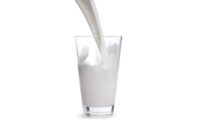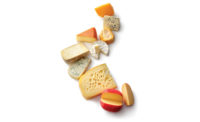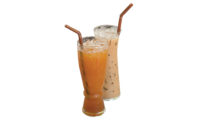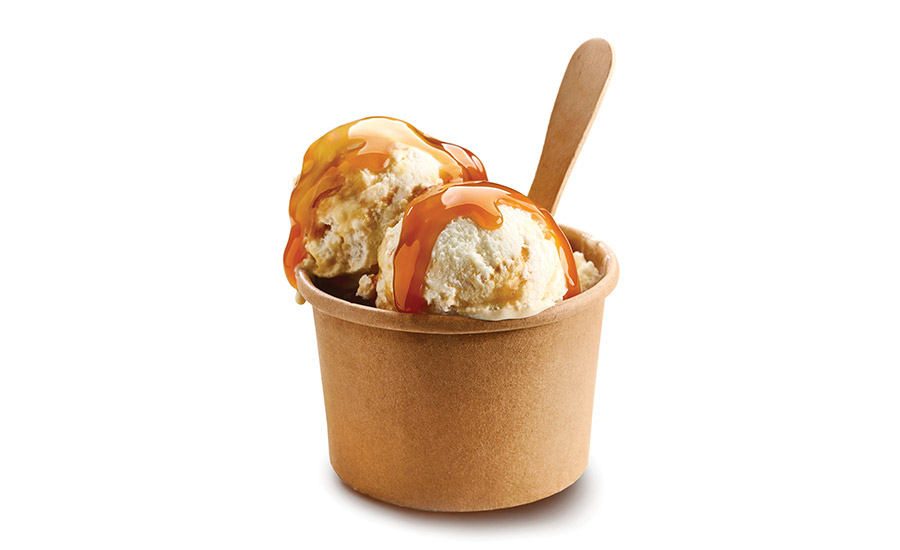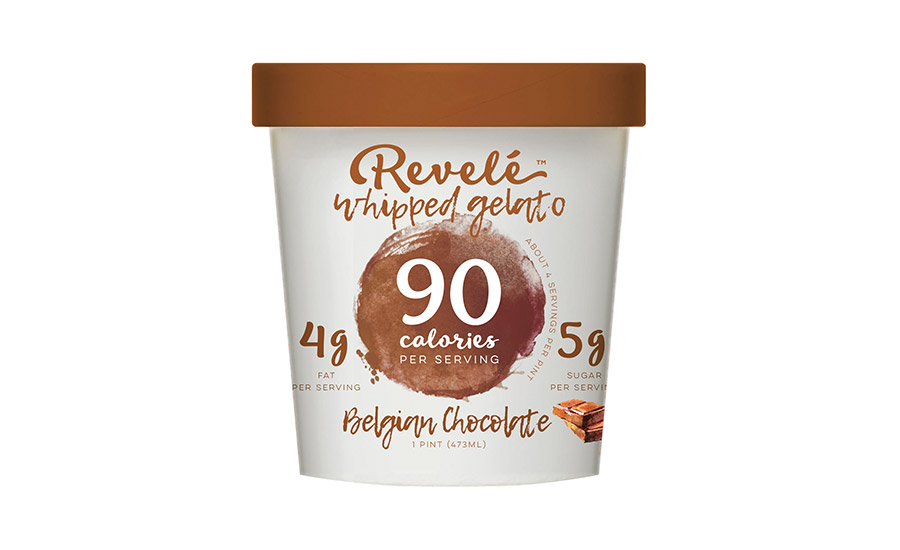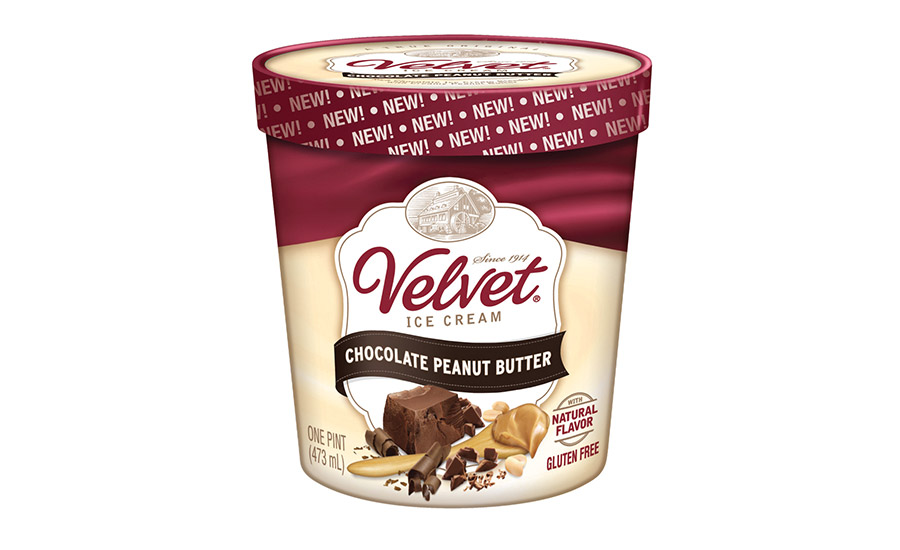2018 State of the Industry report: It's smooth skating for ice cream right now
Healthed-up formulations, indulgent recipes and new flavors score a hat-trick for the ice cream segment






















Consumers’ love affair with ice cream is global in scope. In fact, the global ice cream market size was valued at US$54.80 billion in 2016 and is expected to grow at a compound annual growth rate of 4.1% between 2018 and 2025, according to a January 2018 report from San Francisco-based Grand View Research.
The demand for premium products — especially in developed regions such as North America and Western Europe — is expected to drive market growth in terms of sales value during the forecast period. But it might not be time to dance with the puck: Ice cream volume is expected to decline in both of these regions, the report said, thanks to more health-conscious consumers who are refraining from ice cream consumption.
Milk | Cheese | Cultured | Ice Cream | Butter | Non-dairy Beverages | Ingredients | Exports
But on the U.S. retail side of ice cream, the current state of affairs looks pretty positive. Dollar sales of ice cream rose 1.2% to $6.2 billion during the 52 weeks ending Aug. 12, 2018, while unit sales increased 1.8%, according to data from Chicago-based market research firm IRI.
On the frozen novelties side, dollar and unit sales made a recovery from the not-so-hot previous year, jumping 3.5% (to $4.7 billion) and 1.8%, respectively.
Better-for-you makes the save
Contrary to the Grand View Research report’s observations, more and more health-conscious consumers appear to be gravitating to the ice cream category. Cary Frye, senior vice president of regulatory affairs for the Washington, D.C. based International Dairy Foods Association, calls it the “Halo phenomenon.”
These consumers definitely have warmed up to higher-protein, lower-sugar, reduced-calorie Halo Top ice cream — up 31.9% in dollar sales and 54.8% in unit sales for the 52 weeks ending Aug. 12, 2018, IRI data show. And many other brands have introduced their own versions of the popular frozen treat, Frye noted.
“I think what really triggered that was the high protein — it’s not just taking things away,” Frye said.
Doug Bouton, president and chief operating officer of Los Angeles-based Halo Top Creamery, said his company has definitely seen growing demand for better-for-you offerings in the “Halo Top” category over the past year, particularly for products boasting high protein and low sugar.
“In addition, we’ve seen an increased demand for nondairy and vegan products across all categories, especially in ice cream,” he said, pointing to January 2018 article on the Food Revolution Network website that reports a 600% increase over the past three years in the number of U.S. people who identify themselves as vegans.
To help meet that demand, Halo Top recently launched a nondairy and vegan frozen dessert pint lineup that comes in 14 flavors.
“It was our No. 1 fan request, so it has been incredibly rewarding to launch the nondairy and vegan line and see the response from our fans,” Bouton said.
Back on the dairy side, Wells Enterprises Inc., Le Mars, Iowa, tapped into the better-for-you trend with the 2018 launch of Chilly Cow light ice cream. Mark Meyer, senior vice president, demand for the company, said the product is the first “protein-packed light ice cream” that uses ultrafiltered milk. The result? A creamier product that boasts a more concentrated protein content.
“There is an evolution occurring in the high-protein category where consumers expect these products to not only deliver the better-for-you attributes, but also deliver on sensory and the taste of real ice cream,” he said. “We differentiated ourselves in this segment not only through our great taste and texture, but also size. Chilly Cow is sold in two-packs of half-pints. The brand also offers novelties.”
This year also saw Burlington, Vt.-based Ben & Jerry’s entering the better-for-you market with the introduction of the Moo-Phoria line of ice cream pints. The light ice cream comes in three flavors and is said to have 60-70% less fat and at least 35% fewer calories than traditional ice cream.
Gelato is getting healthed-up, too. New here is Revelé whipped gelato from the Huntington Beach, Calif.-based company bearing the same name. Available in white chocolate strawberry, Belgian chocolate and four other flavors, the line is made with cane sugar. The Belgian chocolate variety has only 90 calories and 5 grams of sugar per 1/2-cup serving.
Minneapolis-headquartered Talenti Gelato & Sorbetto also had the health-conscious set in mind when it introduced its Talenti Crafted with Less Sugar gelato line this year. The gelato, which comes in vanilla cinnamon, mint cookie crunch and chocolate fudge swirl, is made with the natural sweetener monk fruit and erythritol. A 1/2-cup serving of the chocolate fudge swirl flavor has 120 calories, 6 grams of fat, 9 grams of sugar, 6 grams of sugar alcohol and 4 grams of protein.
And Yasso Inc., Quincy, Mass., recently debuted Yasso frozen Greek yogurt in pints. It is offered in Party Animal, Rolling in the Dough and six other flavors. The Rolling in the Dough flavor has 130 calories, 2.5 grams of fat, 16 grams of sugar and 6 grams of protein.
Indulgence assists on the goal
Better-for-you ice cream and frozen novelties aren’t the only standouts on the rink, however. Premium, more indulgent offerings are still in high demand.
“There is an interesting dichotomy in the ice cream category,” Meyer noted. “There are definitely consumers looking for high-protein, low-calorie and low-sugar products, around 20%, but there continues to be consumers looking for indulgent experiences. Bringing relevant innovation here is key as well.”
Sara Schramm, marketing brand manager for Blue Bell Creameries LP, Brenham, Texas, echoed that sentiment.
“Our focus is to continue to introduce indulgent ice cream flavors in the traditional half-gallon package size and always be on the lookout for the next new and exciting product line,” she said.
Richard Graeter, president and CEO of Cincinnati-based Graeter’s Ice Cream, called indulgence a mainstay in the category. After trying better-for-you offerings in the category, many people concluded they come up short, he added.
“Ice cream is about indulgence, and that’s where we stay,” he stressed. “Indulgence defines Graeter’s.”
In line with consumers’ craving for indulgence is their desire for clean labels and quality ingredients, said Matt Thornicroft, assistant marketing and communications manager for Pierre’s Ice Cream Co., Cleveland.
“Our team is mindful of this in all our new flavor creations,” he added. “It’s also a chance for us to share the story of how our flavors are made.”
In addition to top-quality ingredients, consumers want regionalized global flavors— “not just broad-sweeping global flavors,” said Keith Schroeder, CEO and founder of High Road Craft Ice Cream Inc., Marietta, Ga. He pointed to a region-specific flavor from Thailand as an example.
“The consumer knows the world via food now,” he said, “and manufacturers won’t win with ‘Americana.’”
Speaking of indulgence and creative flavors, Pierre’s Ice Cream recently added three flavors under the Pierre’s Signature ice cream brand: Peanut Butter commotion, French toast and coconut almond fudge chunk. And Pierre’s ice cream snack cups made their debut about a year ago, Thornicroft noted. Available in chocolate peanut butter cup, coconut pineapple, green tea, sea salt caramel toffee crunch, and vanilla, they marry adventurous flavors and premium ingredients in a 5-ounce single-serve snack size.
New indulgent flavors also were the focus this year for Blue Bell Creameries. The company introduced chocolate peanut butter cookie dough — milk chocolate ice cream with peanut butter cookie dough pieces and milk chocolate chunks — back in March, Schramm said. And in honor of National Ice Cream month, it debuted key lime mango tart, which features sweet and tangy key lime ice cream, graham cracker crust pieces and a mango sauce swirl.
For its part, Graeter’s introduced Graeter’s Chunky Chunky Hippo ice cream in partnership with the Cincinnati Zoo & Botanical Garden, home to the famous “Fiona the hippo.” Making its debut in January, the ice cream — combining a toffee base, salted roasted peanuts and milk chocolate caramel truffles — features an illustration of Fiona on-pack. A portion of the proceeds benefit the zoo.
And Utica, Ohio-based Velvet Ice Cream added six premium flavors to its 1.75-quart ice cream lineup: banana cream pie, chocolate chip, Kentucky praline pecan, strawberry cheesecake, campfire s’mores and salty caramel.
On the novelties front, Wells Enterprises launched Blue Bunny Load’d Sundaes, Meyer noted. They feature soft ice cream “loaded with tons of toppings.”
And ready to make its debut soon is a new bonbon-style novelty item from High Road Craft Ice Cream. The company also is expanding its ice cream cookie sandwich line to seven flavors. The products aim not only to satisfy consumers’ taste for indulgence, but also to meet the overarching trend of convenience.
“The expansion of the novelty category is crucial, as consumer behavior is leaning towards items that are convenient and easily shared,” Schroeder explained.
Limited-edition shoots it across the goal line
Limited-edition/seasonal ice cream offerings also boast appeal and add excitement to the category.
This fall, Perry’s Ice Cream, Akron, N.Y., launched a limited-edition flavor to celebrate the fall football season. S’more Yardage combines toasted marshmallow ice cream with peanut butter sauce and peanut butter footballs. The pint packaging features a football field theme and a special nod to those “Friday night lights,” the company noted.
And Halo Top released a peaches & cream seasonal flavor earlier this year. The reduced-calorie, reduced-sugar ice cream has 80 calories, 2 grams of fat, 8 grams of sugar/5 grams of sugar alcohol and 5 grams of protein per 1/2-cup serving.
Avoid the penalty box
Like other dairy categories, the ice cream category is facing a few challenges. One such challenge both Graeter and Thornicroft pointed to is the high cost of vanilla. And there’s little dairy processors can do about that.
But other challenges also spell opportunity. For example, consumer preferences continue to evolve, meaning no single solution will meet every need, Meyer said.
“The category needs to attract new consumers by addressing a variety of offerings for each consumer segment and occasion,” he pointed out, “be it indulgent, a full dessert, a snacking occasion, low calorie, high protein, low sugar or nondairy.”
And with a few “big players” dominating the landscape, it can be hard for smaller processors to “break through that barrier to entry” and establish partnerships with retailers, Bouton noted.
“To do so, we focus on what we do best: providing retailers with best-in-class products and innovation that will provide genuine incremental growth to the category,” he said
Milk | Cheese | Cultured | Ice Cream | Butter | Non-dairy Beverages | Ingredients | Exports
Looking for a reprint of this article?
From high-res PDFs to custom plaques, order your copy today!




